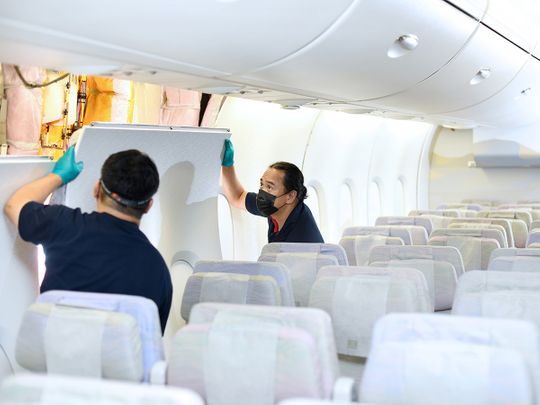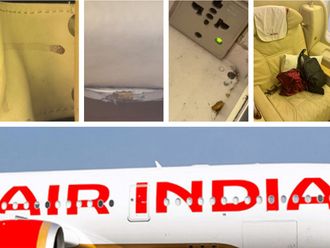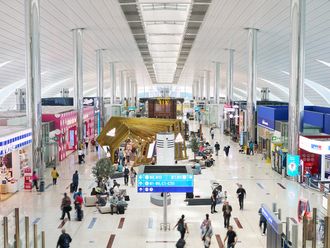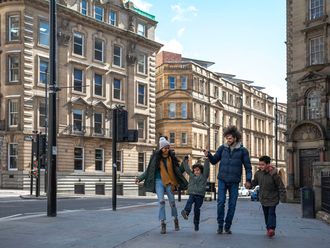
Dubai: Dubai’s flagship carrier Emirates has completed the retrofit of five of the 120 aircraft earmarked for its ambitious $2 billion retrofit programme, a top airline official has revealed.
Adel Al Redha, Chief Operating Officer of Emirates, said the airline can now retrofit two aircraft every month. Work is underway to improve efficiency by reducing the number of days to retrofit one aircraft. “Every aircraft (Airbus A380) that has undergone a retrofit has been deployed to various destinations within our network,” said Al Redha.
Emirates has earmarked its Airbus A380s and Boeing 777s for a facelift until April 2025. Once 67 A380s are refreshed and back in service, Emirates will begin the retrofit of 53 of its Boeing 777s. In an earlier interview with Gulf News, Adnan Kazim, Chief Commercial Officer of Emirates, revealed that it costs $15 million to retrofit one aircraft.
The retrofit programme will result in nearly 4,000 Premium Economy seats installed, 728 First class suites refreshed, and more than 5,000 Business class seats upgraded. The airline aims to retrofit four Emirates aircraft from start to finish every month, continuously for over two years.
Al Redha added, “We are improving our efficiencies by reducing the number of days that it takes to retrofit an aircraft. It’s been very successful and is going as per target.” In January, the airline’s first retrofitted A380 was deployed to London Heathrow, and plans are underway to get 50 aircraft to be part of the retrofit programme this year.
Availability still an issue when it comes to SAF
Commenting on the airline’s efforts to adopt sustainable aviation fuel (SAF), Al Redha said Emirates has engaged with several airports across Europe and the Far East to use alternative fuel wherever possible. Emirates successfully operated its first milestone demonstration flight on a Boeing 777-300ER, powering one of its engines with 100 per cent SAF in January this year.
Since the airline successfully completed the test flight, Emirates is working with these European and Far East airports to bring about a practical use scenario to use SAF. “We have a clear strategy towards our obligation to participate in a zero omission approach. Aircraft fuel is one of the elements that can give us such as advantage,” said Al Redha.
“Since we have proven that it is possible to use SAF in one of the aircraft engines, we have been engaged with airports in Europe and the Far East where we would be carrying a percentage of our fuel from SAF. I think UAE hosting COP28 by November this year (is also a significant step forward) towards adopting more such clean measures,” he added. However, the biggest challenge remains the ease in availability of such fuel at the airports. “The use of SAF is still subject to availability at various airports,” stated Al Redha.
The airline COO also confirmed that Emirates is working with Boeing and GE to run a second set of tests where both engines for the aircraft will be tested using SAF. “Once we are satisfied with all parameters (needed to run a test flight successfully), we will run the second test flight. But for now, even using one engine to run on SAF provides great opportunities for savings on fuel consumption,” said Al Redha.
For example, for an aircraft to operate from here to Europe, the fuel requirement stands at approximately 70 tonnes. “If only 50 per cent of that is being used, it cuts down consumption to 35 tonnes, resulting in considerable fuel savings,” he added.
On the airport front, Emirates has also shifted to using electric cars for its First and Business Class passengers. “Both dnata and we are working to replace traditional cars with electric cars in the future. We are very committed and have a strategic plan to deploy sustainable measures realistically,” he added.











